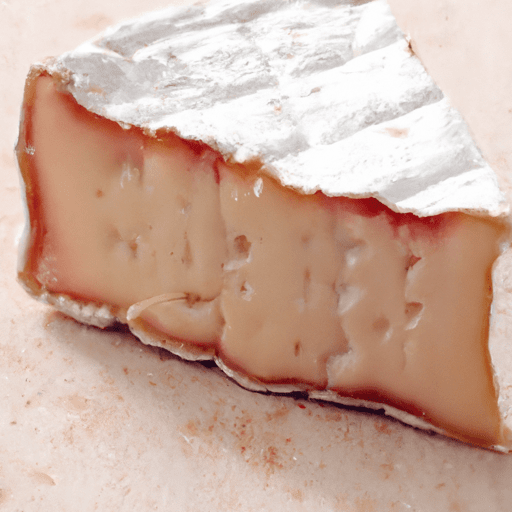Unleashing the Magic of Brie Cheese: A Delicious Delight
Ah, brie cheese! Its velvety texture, delicate aroma, and rich flavor make it a beloved gourmet ingredient that never fails to impress. Whether you’re an adventurous cheese connoisseur or simply enjoy indulging in delectable bites, brie cheese has something captivating to offer everyone.
A Taste of Elegance
Brie cheese is known for its irresistibly creamy and buttery taste. It boasts a mild, nutty flavor that dances on the palate, accompanied by a subtle earthiness that is uniquely its own. As the cheese matures, its flavors intensify, while the rind develops a slightly tangy note.
Culinary Versatility
When it comes to cooking, brie cheese truly shines. Its versatility lends itself to a myriad of culinary creations, making it a staple in many kitchens. Here are some delightful ways to incorporate this enchanting cheese into your dishes:
1. Baked Brie
Baked brie is a classic appetizer that never fails to impress. Slice off the top layer of the cheese rind, drizzle it with honey or your favorite jam, and bake it until it becomes warm and gooey. Serve it with crusty bread, fresh fruit, or crackers for a delightful combination of flavors and textures.
2. Brie and Fruit Pairings
The combination of brie cheese and fresh fruit is a match made in culinary heaven! The creamy and slightly salty nature of brie beautifully complements the natural sweetness of fruits like apples, pears, and grapes. Create a delightful charcuterie board or elevate your salad by adding slices of brie and fresh fruit for a burst of refreshing flavors.
3. Brie Stuffed Burgers
Take your burgers to the next level by stuffing them with a delectable slice of brie cheese. As the burger cooks, the brie melts and infuses its creamy goodness into every bite, ensuring a drool-worthy experience.
Nutritional Value
Beyond its sensational taste, brie cheese also offers some nutritional benefits. Although it is indulgent, it contains essential nutrients like calcium, protein, and vitamins B12 and B2. While moderation is key due to its higher fat content, brie cheese can be enjoyed as part of a balanced diet.
The Story Behind Brie Cheese
Brie cheese originates from the region of Brie in northeastern France, dating back to the 8th century. Traditionally, it was made from raw cow’s milk and aged for several weeks to months, allowing the flavors to develop and the characteristic white, edible rind to form. Today, brie cheese is produced globally using pasteurized milk to meet safety regulations.
Fun Facts
- Brie cheese is a favorite of many famous personalities, including French leader Charles de Gaulle.
- The French often serve brie cheese as a part of their dessert course, accompanied by fresh strawberries or figs.
- Brie cheese received its name from the Brie region where it was originally made.
So, next time you’re searching for an elegant and versatile cheese to elevate your culinary creations, don’t forget about the magical allure of brie cheese. Its creamy texture, delicate flavors, and culinary adaptability make it a delicious addition to any dish. Whether you savor it on its own or explore its endless possibilities in cooking, brie cheese is a true gastronomic delight that captivates food enthusiasts worldwide.
Sure! Here are some interesting facts about Brie cheese:
Origin: Brie cheese originated in the region of Brie, located in the Île-de-France region of northern France. It is named after the historical French province.
Common uses: Brie cheese is a versatile cheese that can be enjoyed in various ways. It is often served as a table cheese, either on its own or paired with fruits, bread, or crackers. Brie is popular for its smooth and creamy texture, making it suitable for spreading on sandwiches or melting in dishes like quiches and omelettes.
Nutritional benefits: Brie cheese is a good source of several nutrients. It contains protein, calcium, phosphorous, and vitamin B12. However, it is also high in fat and calories, so it should be consumed in moderation as part of a balanced diet.
Unique properties: One of the defining characteristics of Brie cheese is its white, bloomy rind. This rind is edible and adds a distinctive flavor to the cheese. It is formed by the growth of certain types of mold during the aging process. Brie is a soft-ripened cheese, which means it has a soft interior with a slightly firm outer layer. The flavor of Brie can vary depending on the ripeness, ranging from mild and buttery to more pungent and earthy.
Historical significance: Brie cheese has a long history dating back to the 8th century. It was reportedly a favorite of Charlemagne, the medieval Emperor of the Carolingian Empire. Brie gained popularity during the reign of French kings, particularly in the 18th and 19th centuries when it became a staple in the royal courts. Today, Brie is appreciated and enjoyed worldwide.




Use the share button below if you liked it.
It makes me smile, when I see it.